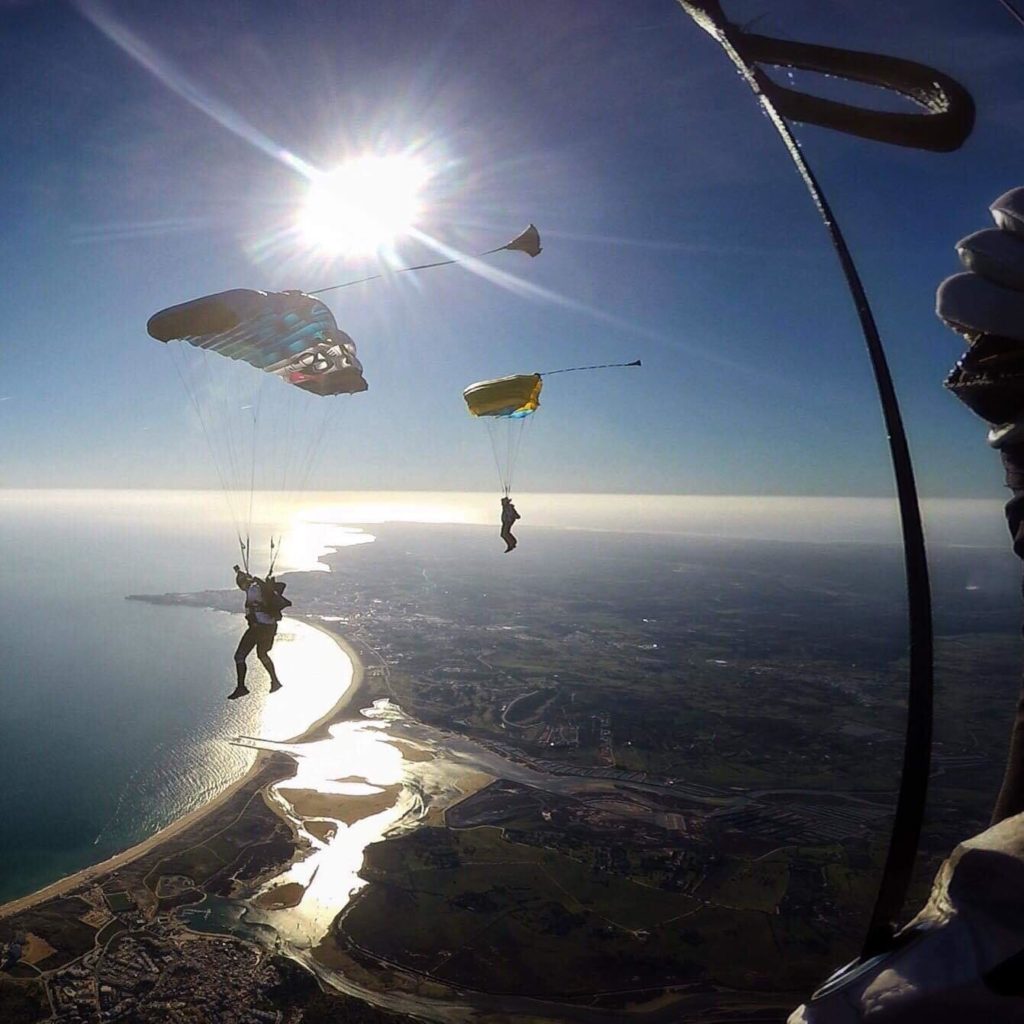
Get Canopy Coaching!
Getting canopy education is the most important thing you can do in skydiving. Canopy-related incidents are responsible for a frightening number of deaths and serious injuries. In the last two years canopy collisions and low turns accounted for 32 per cent of sport-related deaths in the US.*
The pattern has completely changed from years ago, when impact without a fully open parachute was the major cause of death – accounting for 40% of USPA fatalities from 1983 to 1987. Technological advances mean nowadays equipment is rarely to blame for incidents; pilot error usually is. Similar advances have created higher performance canopies, that skydivers jump sooner, and our training expectations have not advanced for the situation.
(*Source: USPA Fatality summaries 2018, and 2017, discounting suicides and heart attacks.)
False Economy
Generally, there is a massive disparity between the amount of money people invest in freefall skills compared to canopy skills. The former may bring ‘glory’ but the latter could keep you from serious harm. It’s not logical. Neither is spending a lot of money on a new canopy and not investing in learning how to fly it. Being able to fly like a ninja after all your tunnel training does not do anything for your canopy skills, yet it may give you unjustified confidence in your piloting ability. Getting invited on cool events is not just freefall ability; the organisers want a safe event so being a competent pilot is a vital part of qualifying.
Coaching saves money in the long term. Learning pilot skills takes time, effort and practice. Getting good quality coaching can reduce this time, steepen your learning curve, prevent bad habits, help avoid injury, and will offset your cost in the long run. Do not fall into the trap of thinking it’s better to spend the coaching money on more jumps. You will benefit your whole skydiving career and learn far more on a canopy course than with a few random jumps. Your learning will continue after the course, as you become more aware under canopy and are able to develop your skills.
Free advice is plentiful in the bar and on the packing mat – but this ‘fast-food coaching’ is a foolhardy way to try to improve your piloting. All-round canopy skills come from a structured system given by a trained coach, not a series of random tips without the full story. You get what you pay for. I am not a canopy coach (I teach freefall skills) so I have no axe to grind. I am simply concerned for the safety of skydivers around me.
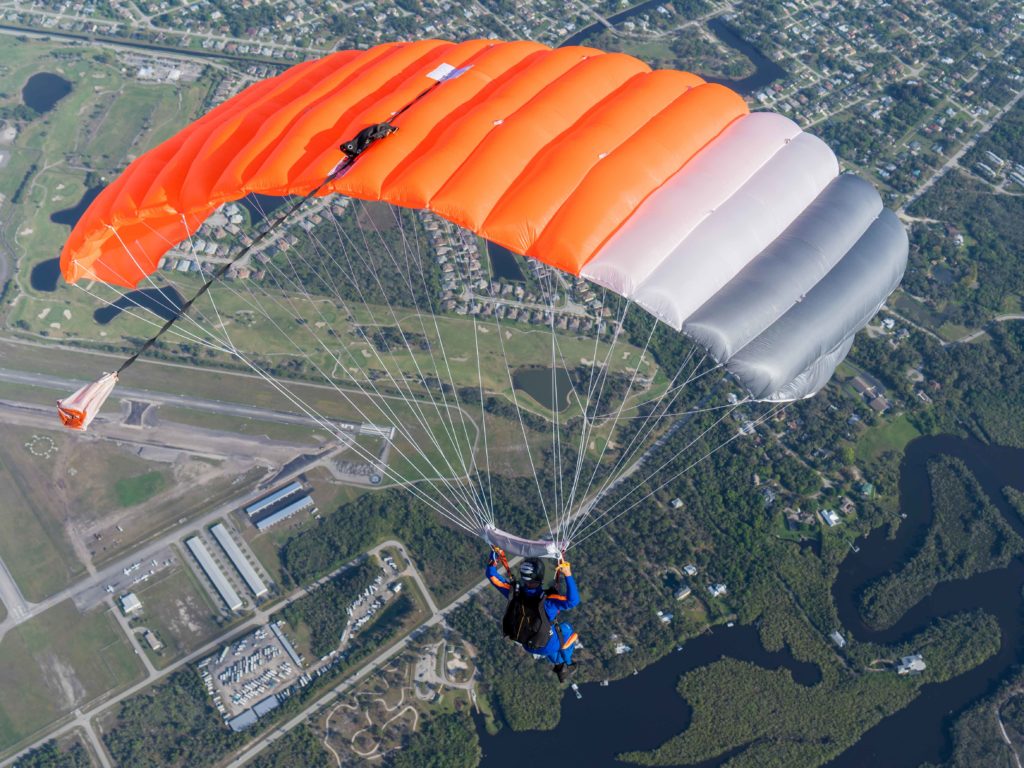
Observation by Jason Moledzki
“A student joined one of our courses, he had over 250 jumps, a newer rig, a newish canopy and, a brand-new high-end jumpsuit with a price tag of nearly $1,000. When I asked him how long ago he had purchased the suit (thinking he might not want to wear or damage it while ‘learning’ to land his canopy) He said, “about a year ago, when I had about 100 jumps”… I couldn’t help but notice that what that meant is, that he had prioritized getting a jumpsuit worth about $1k over a potentially life-saving basic canopy skills education for about $300! Now, don’t get me wrong, I’m all about looking good, and my first skydiving purchase was a jumpsuit too, but this says a lot to me about how our culture is failing to truly look out for the best interest of the beginner pilot.”
Jason Moledzki, Flight-1 Founder

Responsibility
An AFF course gives a very basic introduction to canopy flight, as it does to freefall. It’s your responsibility to map out a progression plan for your canopy prowess. Canopy training should be ongoing throughout your skydiving career not just one course at the start. If your DZ doesn’t have a formal canopy school, then travel to one that does.
We have a responsibility to ourselves, our families and other innocent skydivers to develop our canopy awareness and defensive flying skills. Flying a potentially lethal weapon without appropriate training is like driving a car after too many drinks – you’re endangering other lives as well as your own.
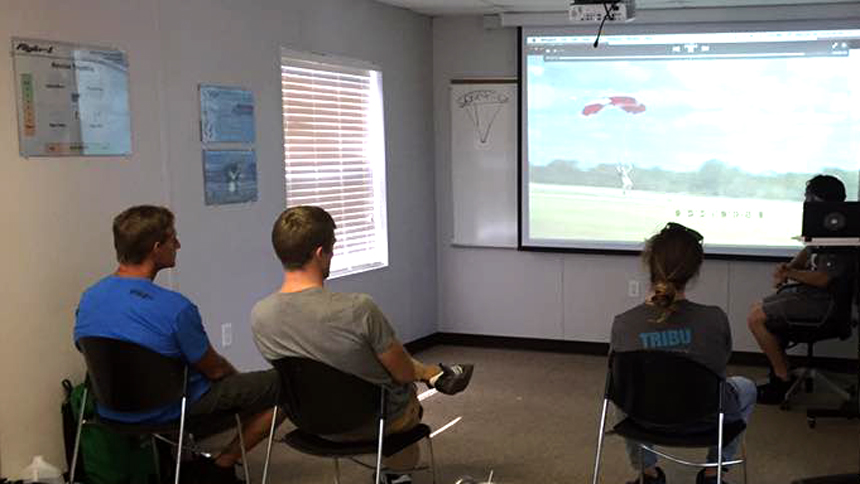
Canopy pattern visualisation
We spend a lot of time planning and visualizing our freefall adventures, but how often do you include your canopy flight plan? I don’t just mean knowing the landing direction. I mean knowing where you are in the exit order, what jumpers are before and after you, where you expect to open, where your holding area will be, what pattern you will fly, what height you will make your turns and where you aim to land.
How do you know if you need canopy coaching?
If you fly a parachute and you have not been on a canopy course, then you need coaching. That’s the equivalent of driving a car on the roads with only a 10-minute driving lesson. Moreover, cars just move on one surface, in two dimensions, along roads. We fly canopies in three dimensions with no marked routes and with a range of different flight characteristics, so we have to be very focussed, aware and have a clear plan to avoid traffic issues.
Unlucky skydiver?
Do people around you make mistakes that mess you up? If you feel you are often at the mercy of others or the wind conditions that’s a sign you need canopy coaching. Being in complete control under canopy allows you to make your own pattern and anticipate the actions of others, rather than being a victim.
Landing problems
Do you always land where you want to? If not, sooner or later you will land somewhere you don’t want. Can you land sweetly every time, regardless of wind conditions or whether you’re having a bad day? If not, canopy coaching will change your life. You may be flaring too high, too low or incompletely; misjudging the winds; not allowing for terrain; being caught out by others; or not understanding your canopy’s flight characteristics.
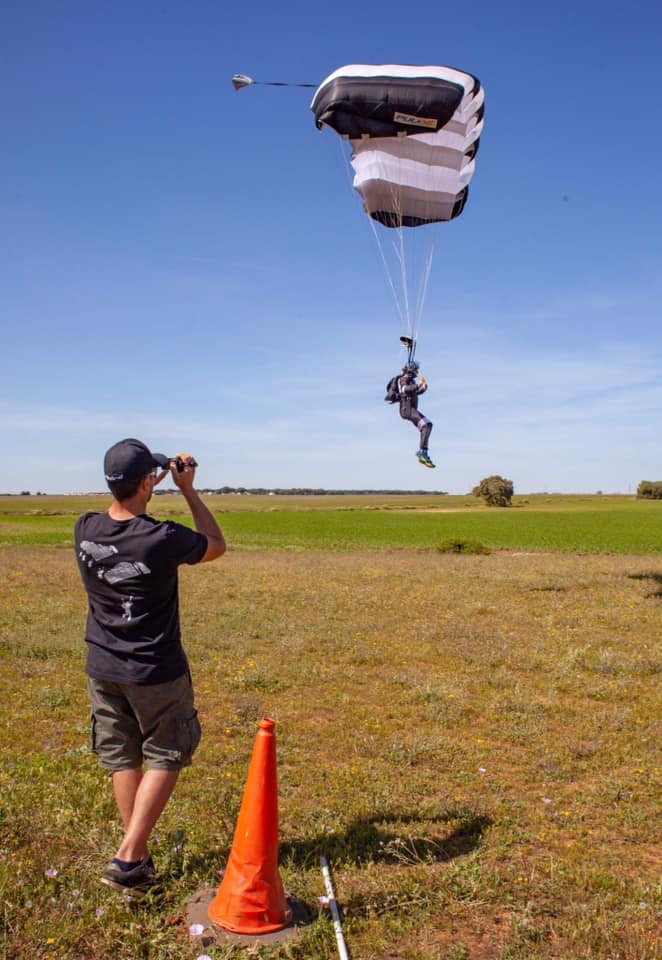
Low turn fatalities
If you don’t practice high speed landings, you may think you’re not at risk of dying from a low turn. But the majority of low turn fatalities are not from swooping, they are from people turning low to avoid an obstacle or get into wind. Canopy training will help you make a better flight plan away from hazards and to choose a flat turn or no turn where appropriate. If you’ve practised intentional downwind and crosswind landings, you’ll feel more confident electing for these options in a stressful situation.
Observation by Albert Berchtold
“Many years ago if a skydiver didn’t have an awesome tip-toe landing they would wonder why the canopy landed them hard. Today most skydivers have come to realize that piloting a parachute is a skill. That skill requires proper training and practice. Failure to get proper instruction is like getting into an F-1 car with your learner’s permit, or trying to take on the high dive when you just learned how to tread water. You may survive, but that will be in spite of your contribution to the situation, not because of it. And once you’re taught how to drive that race car, or how to perform on that high dive, or FLY that parachute to its full potential, these activities not only become less risky, but a whole lot more enjoyable.”
Albert Berchtold, Competitive Canopy Pilot / PD Marketing Manager

What will you learn?
You may think that canopy coaching is about high-performance landings but this is only a small part of what a coach can offer. Good coaching will increase your canopy toolbox, so you have more options, increased awareness and are more likely to choose the correct input in a potentially risky situation. It will teach you how to fly defensively so you can consistently land safely regardless of the conditions or what others are doing. It will help you realise what you don’t know and need to learn. It will teach you how to make better decisions to improve safety for yourself and those around you. It will help you make informed choices about your equipment, the conditions you jump in, and your future canopy progression.
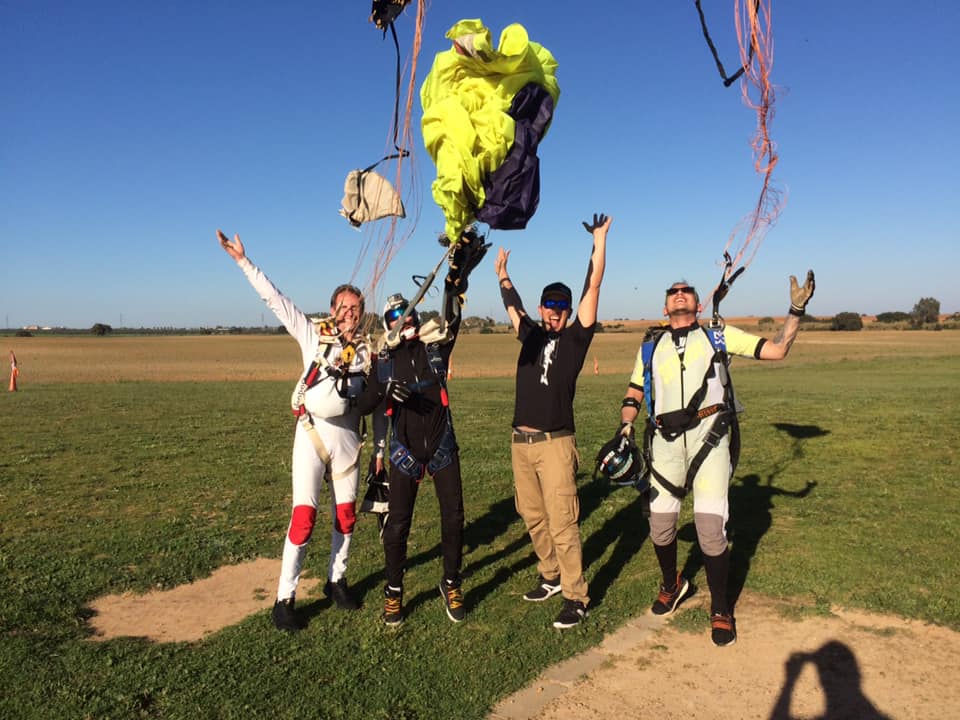
Flight-1 Canopy Courses Syllabi
Here is what is covered on the first three Flight-1 courses for example.
101 Canopy Course
- Basic Aerodynamics
- Effective Flaring
- Pitch, Roll, Yaw
- Flight Cycle
- Flat Turns
- Stalls and Stall recovery
102 Canopy Course
- Turbulence and Rate of Turn
- Rear risers – Turns and Flares
- Body position and active piloting
- Harness Turnsw
- Dive Recovery
- Winds and Effective Glide
- Crosswind Flight Plans and Landings
103 Canopy Course
- Crowded skies
- Canopy Airmanship
- Advanced Accuracy
- Equipment /Malfunctions
- Wraps and Entanglements
Do you think if you completed these three courses you would be a better, safer canopy pilot, less likely to harm others, injure yourself or die?




